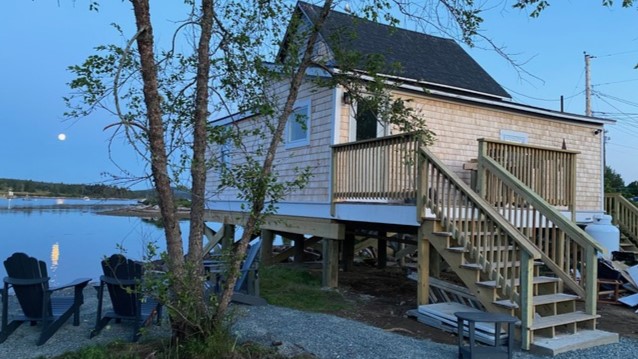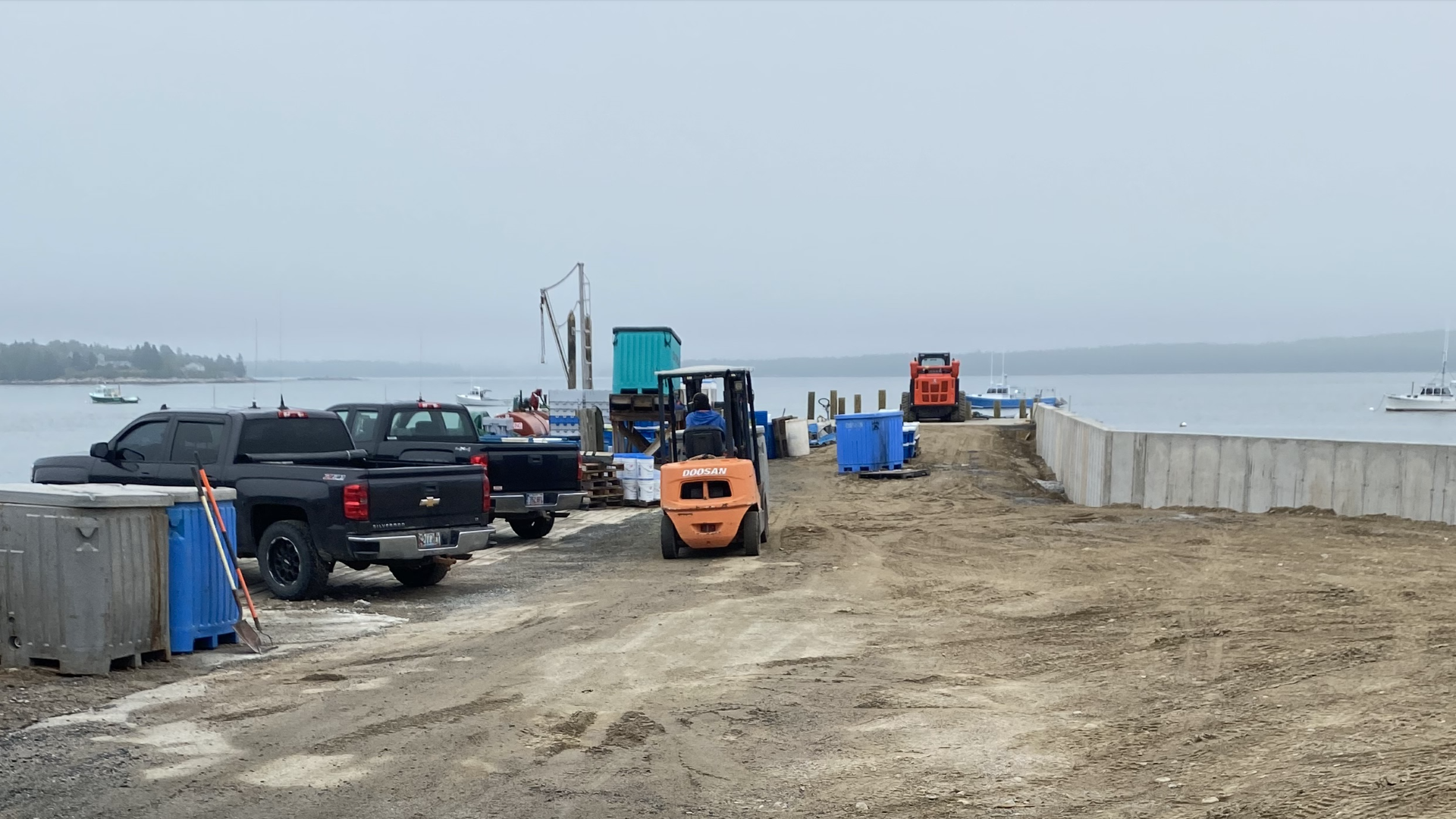The owners of Chipman’s Wharf, a seafood market, buying station and restaurant in Milbridge, had a brutal awakening after the powerful January storms wiped away their 106-foot wharf.
The proprietors — brothers Chris and Jason Chipman and their wives — had insurance that would have covered damage to the pier from fire or an airplane crash, but not storms.
The two families are still reeling from the shock.
The Maine Coast Fishermen’s Association estimated at least 60 percent of Maine’s working waterfronts were heavily damaged or destroyed in the January storms.
Since then, many coastal businesses have had to decide whether to abandon their enterprises or rebuild, hoping to fortify their properties against future major storms — in some cases with a cash infusion from the state.
Earlier this summer, Gov. Janet Mills announced the state would provide $21.2 million in grants to help working waterfronts rebuild.
The Chipmans applied for assistance when it was required that a wharf service at least 20 fishermen, which has since been lowered to 10.
“The damage to the working waterfront had to have a significant impact to the community,” Amity Chipman said.
At Rest Ashoar cottages in Prospect Harbor, a village in Gouldsboro, Ashley and Jacob Knowles were heartsick as they watched three of the five cottages they just finished renovating get lifted by waves and pelted with water.
Ashley said insurance only covered damage to the siding because the cottages, which for a century have been perched over the water, were not “permanently affixed.”
“The reason they were not ‘permanently affixed’ is because there were no foundations to fix them to,” Ashley Knowles said. “The buildings were 100-year-old, non-conforming properties due to the proximity to the ocean, which prohibited us from putting foundations in.”
The Knowles have moved the five cottages back 80 feet from the shoreline and each now rests on a slab. They repaired the siding — the only thing their insurer covered — and replaced appliances, doors and windows that had water damage.
“Every single porch had to be completely redone,” said Ashley. “There was dirt, seaweed and mud. Some of the doors blew open so the water got inside.”
Jacob Knowles, a lobster fisherman and social media celebrity, said the builder, who was a relative, worked quickly and was able to prepare the cottages for the rental season. He said the repairs were covered by their savings and equity lines. Ashley Knowles said they applied to the state for assistance but have not heard back.
After Rest Ashoar opened to renters in May, there has been a steady stream of bookings, with some guests renting all five cottages so extended families can vacation together.
Ashley Knowles said the storms had a silver lining: Ocean water washed up so far back that the properties now have extensive sand beaches, where visitors can lounge and gather around fire pits.
“I prefer how it is now than how it was then,” she said.
Meanwhile, over in Winter Harbor, friends Larry Lawfer and Gene Kelley watched their investment in the Donut Hole — a former breakfast spot that hovers over Henry’s Cove — tip into the water as wind and waves battered the local landmark.
Seaweed and water traveled across the property, the road, and up to the doorstep of the local supermarket, Winter Harbor Provisions.
The two purchased the property less than a year earlier with the idea of renting it and using it themselves. Photos of the building toppling into the water spread online as a testament to Mother Nature’s unforgiving nature.
“It took them nine hours to lift it up,” Lawfer said of the rescue effort by a local contractor, Dale Church.
Like the Knowles, Lawfer and Kelley knew they had to rebuild: “Our first question was what are we going to do,” Lawfer said. “We never discussed just letting it go away. We only discussed how we were going to save it.”
Once the cottage was returned to land, the owners saw the structure consisted of three shacks put together at different times that weren’t connected by a single platform.
“We gave it a solid bottom,” Lawfer said.

They also added insulation and upgraded the plumbing, as well as hired a firm to conduct mold remediation. Lawfer said the current structure is stronger, sturdier and nicer with new shingles, and grass where there was once just scrub and gravel — and it opened to renters late last month.
Lawfer said they have not received assistance from the state. “We applied for everything we could, but I don’t think we qualify because it’s not a primary residence,” he said.
For the Chipman’s Wharf, Amity Chipman said the state will pay up to $271,000, or roughly half the cost of the $540,000 repairs, once the project has been completed.
“It’s expensive, we’re dealing with time constraints and working around the tides,” she said.
She said the new wharf will be shorter and higher. Instead of a support system of pilings, there will be crib work and poles, and concrete on the surface. The Chipmans have also poured a concrete barrier on the south side to serve as a breakwater. The overall structure will be 42 inches higher than the previous wharf.
Amity Chipman said state officials want proof they are building a more resilient structure and have made many suggestions.
“It definitely was traumatic,” she said. “We spoke with an engineer and are just rebuilding in the hopes it will never happen again. When we drive down there and don’t see that pier…” Her voice trailed off.







